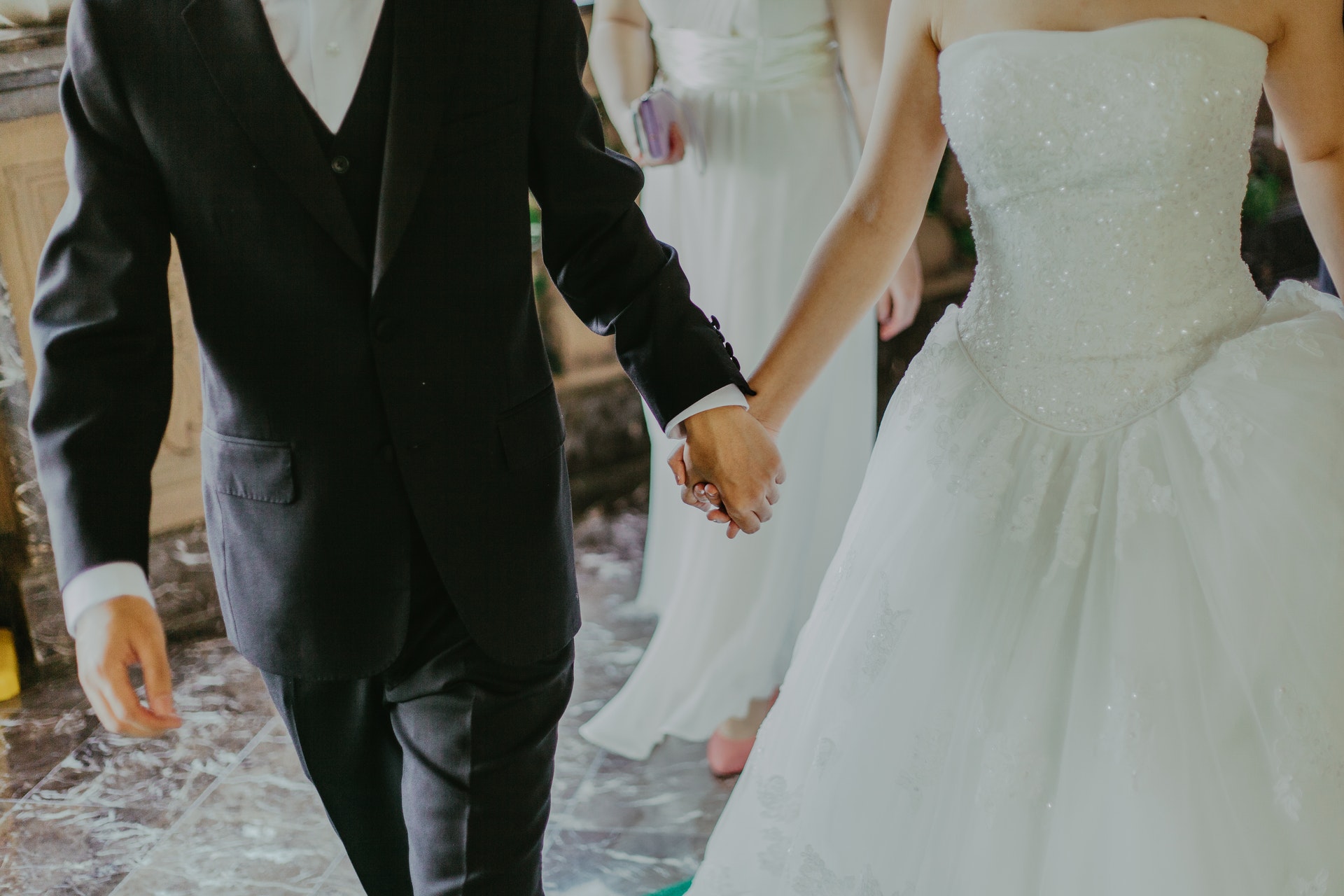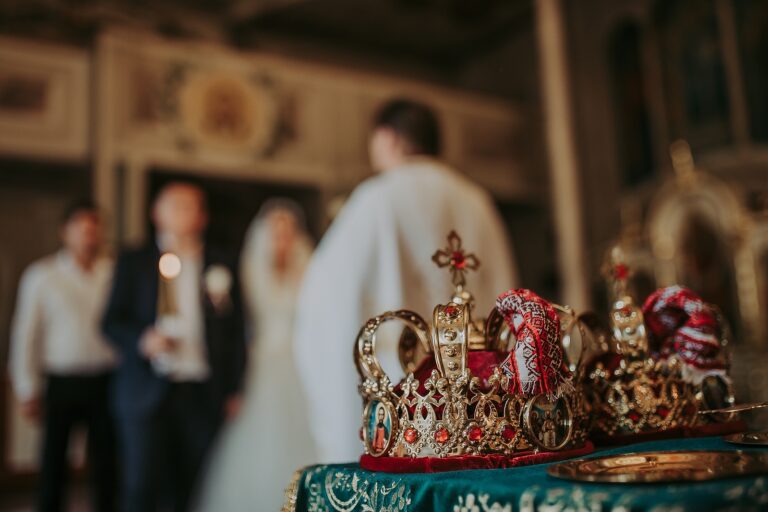In each culture, there are different wedding customs and traditions. For many foreigners, Russian weddings are usually associated with gallons of vodka, a loud feast, traditional Russian dances, red tablecloths, cheerful sounds of the balalaika, and, of course, bears. However, these old stereotypes have nothing to do with much more sophisticated and elaborate traditional ceremonies. From coronation to obstacle courses to kidnapping during the ceremony, there are six totally unique and quite exotic but truly amazing Russian wedding traditions. Check them out for some inspiration!
6 amazing Russian wedding traditions
1. Ransom

In some countries, the family of the groom is supposed to pay an expensive wedding dowry before a ceremony. However, in Russia, the bride’s ransom is a tradition existing more for fun. The groom rounds up his best men, friends, and matchmakers and heads to the bride’s house. The bride’s parents hide her until the groom passes all the challenges organized and prepared for him by the bridesmaids beforehand. The challenges may include solving different puzzles and riddles. The groom must make a gift (e.g., chocolate, flowers, etc.) or pay cash as compensation for each task that he cannot complete. Such an obstacle course is designed both to embarrass the groom and to show the strength of his love.
It is also interesting that sometimes, a male relative of the bride dresses up in wedding attire and pretends to be the real bride until payment is made. The false bride gives the groom a napkin with different lipstick prints. If the fiancé identifies his bride’s print incorrectly, he needs to pay some extra cash.
Once the fiancé finally finds his bride, they go to the registry or city hall office where the official Russian ceremony begins.
2. Betrothal
A betrothal ceremony in the Christian tradition is an agreement mutually spelled out and agreed by both parties. A couple commits to marry one another and morally bind under canon law on a specified date. However, this is only the first part of a traditional Russian Orthodox ceremony of betrothal. The couple should also be blessed by the priest standing at the entrance to the church. Besides, the ceremony includes scripture readings and prayer. The groom and the bride hold lit candles and repeat after the priest the words of their pledge to marry. After the commitment, the couple is blessed with holy water.
3. Crowning

Placing crowns onto the heads of the couple is another unique Russian Orthodox tradition that is even more important than exchanging wedding rings. It is the second part of the traditional ceremony and the emotional climax of the wedding service. The crowns symbolize the honor and glory God bestows on the couple when they stand on a piece of rose-colored cloth. The crowns also represent self-sacrifice. Sometimes, relatives or friends help the bride and the groom hold their crowns. The couple is treated like a king and a queen of their home (domain). To symbolize their joint journey into married life, they share a glass of wine and go around the lectern three times. Then, the priest raises special wedding icons above the heads of the groom and the bride. At the end of the ceremony, the couple is sprinkled with seeds to seal their bonds and ensure their prosperity.
4. Wedding/matrimonial icons
During the sacrament of marriage, the bride gets the blessing for a long and happy life with the icon of the Holy Mother of God, and the groom gets the blessing with the icon of Jesus Christ. Such wedding or matrimonial Orthodox icons are chosen very carefully in advance. Sometimes, the icons of the Mother of God and Jesus Christ are purchased separately, but they can also be arranged in pairs. The price and size of the icons do not matter. However, it is important that the icons are not connected into a single piece, as they are going to be held separately during the ceremony. The priest is supposed to bless the icons with holy water at least several weeks before the ceremony. You can visit russianicon.com to know more about wedding Orthodox icons as a distinctive part of Russian traditions and culture.
5. Multiple toasts

A toast for the new couple is the number one priority on the actual reception agenda. When the master of the ceremony, known in Russia as “tamada,” announces the first toast – “For the newlyweds!” – the guests usually start protesting, saying that the food and wine are too bitter. The newlyweds stand up and kiss one another as long as possible to sweeten the wine and make the food tastier. During their kiss, the quests count “one, two, three…” until the couple stops kissing. If kissing does not take enough time, the guests demand another kiss and then another one. The couple keeps doing it until the guests are ‘satisfied’ with the taste of wine and food.
Other toasts interspersed with food and wine are also made by the parents of the bride and the groom, close relatives, and friends. During the reception, the master of the ceremony often reads some poems and jokes to the couple and guests. Sometimes, they organize the competitions. For instance, the blindfolded groom touches the hands of his bride and her friends, trying to guess which hand is his loved one’s.
6. Kidnapping
It may be surprising, but, according to the popular Russian wedding tradition, the bride is supposed to be taken away from her beloved groom. The groom’s friends or guests usually kidnap the bride in the midst of the wedding ceremony. It is nothing more than a game. The groom has to buy out the bride to show that he is wealthy, and his feelings are strong enough. After he pays “the kidnappers” and solves some riddles, he can get his loved one back.
Overall, a Russian wedding celebration is indeed a great feast with music, dances, endless toasts, and exciting contests. Russian wedding traditions are designed to entertain and make the ceremony an unforgettable experience for both the guests and the newlyweds.

